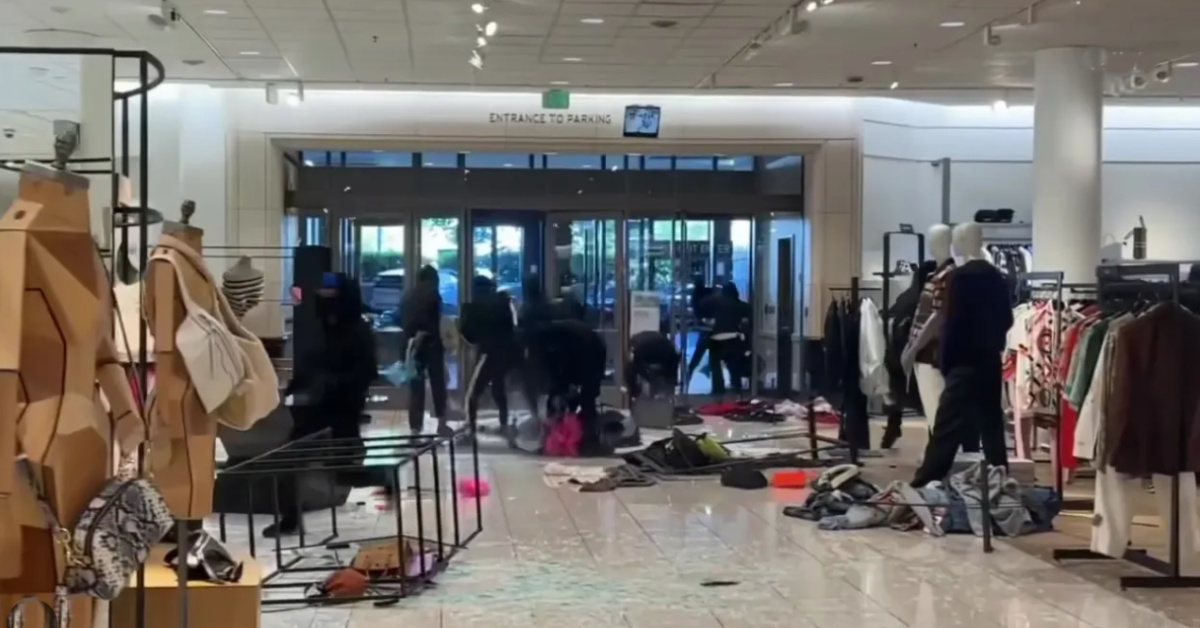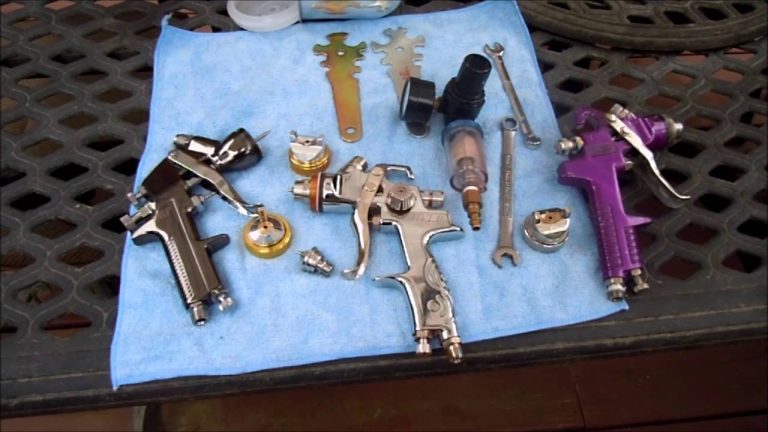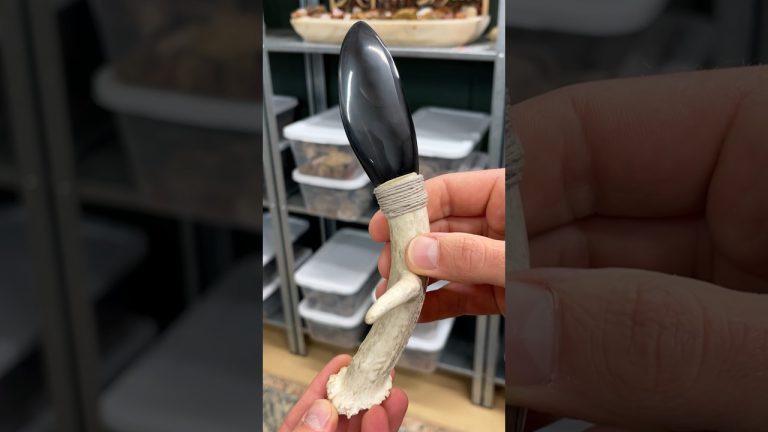(Psst: The FTC wants me to remind you that this website contains affiliate links. That means if you make a purchase from a link you click on, I might receive a small commission. This does not increase the price you’ll pay for that item nor does it decrease the awesomeness of the item. ~ Daisy)
Author of What to Eat When You’re Broke and Bloom Where You’re Planted online course
There’s an epidemic spreading across America, and it isn’t the one the mainstream media is talking about. It’s the epidemic of flash mob robberies. This is not only causing problems due to the violence and trauma inflicted on those present during the event. It’s also driving up costs even further in a nation facing unprecedented inflation.
According to Loss Prevention Magazine, each event costs retailers approximately $700,000 for every billion dollars in sales, and it’s happening almost daily.
A lot of people seem to brush off flash mob robberies as a bunch of kids who got together through social media getting out of hand. But they’re symptoms of a bigger rot: organized crime and neutered criminal justice policies that are spreading across our country fast.
What’s a flash mob robbery?
If you haven’t heard of these, you may be wondering what a flash mob robbery is.
A flash mob robbery is a form of organized crime that occurs when groups of people suddenly enter a store, steal as many items as possible, and vanish as quickly as they appear. For those around them, it’s often terrifying and disturbing. The schemes are usually thought out via social media and executed within a matter of minutes. The groups typically disguise themselves by wearing masks, hoodies, or gloves. Often, aggressive behavior is used and causes those who are present great distress.
The trend began in California, but it’s important not to think, “Oh, I’m safe because I don’t live in California.” It’s beginning to spread outside of the state because of several reasons.
1.) Nobody stops them. People in retail outlets just stand back for their own safety. (Most locations require employees to do this.)
2.) On the off chance the criminals are caught, they’re generally released within a matter of hours because of bail reform.
It may just be a big city problem right now, but I am certain we’ll see this spread more and more as the criminally inclined – or even younger folks in general – see others getting away with it with no consequences.
Best Buy has previously cited organized retail crime as the reason their profits have continued to dip.
It’s not just kids out for kicks.
Before we start dumping on the younger generation, however, it’s important to note that, in many cases, this is organized crime. According to the GVWire:
The flash mobs are usually organized by local people who recruit their crews and send them to steal specific merchandise requested by criminal organizations throughout the country, said Ben Dugan, president of the Coalition of Law Enforcement and Retail.
Those who do the stealing get paid between $500 and $1,000 to take as much as they can and bring it back to organizers who ship it to other parts of the country.
“Crew bosses organize them, they’ll give him the crowbars, and in some cases even rent them cars, or provide them with escape routes or a list of products to actually go out and steal. It looks very chaotic but it’s actually very well organized,” Dugan said.
The flash mobs are a symptom. The organizers are the illness.
It’s not just high-end luxury stores either.
The Los Angeles Daily News cited a podcast when explaining the issue in a recent article.
However, according to the National Retail Federation, high-end stores with luxury items represent the minority when it comes to targets for organized retail crime.
“(Organized retail crime) groups also target everyday consumer goods,” David S. Johnston, vice president of asset protection and retail operations with the federation, said in a video the organization made on retail crime. “They have a preference (for) goods of lesser value with an increased resale value.”
Some then sell the stolen merchandise to individuals or a group, called a “fence” by law enforcement, through online marketplaces, swap meets or seemingly legitimate businesses, CHP officials said. The buyers may or may not be aware the items they purchase were stolen.
The LADN continues to explain:
LAPD has dealt with groups of high school kids overwhelming convenience store clerks for several years, but said these flash mobs are well-planned and organized.
“They’ve cased it out, they’ve looked at it, they get it over with quickly,” Pitcher added. “It’s different from the thrill of doing it for public consumption.”
Organized retail crime rings target items that are difficult to track and are easily resold. Stolen items such as Tide detergent, baby formula, cosmetics, Louis Vuitton handbags and vitamins that once were hawked at flea markets or street corners are now fenced online by gangs to raise money for their activities, said Rachel Michelin president and CEO of the California Retailers Association.
“What we are seeing is more sophistication,” Michelin said. “We see a lot more recruiting; they recruit street gangs, the homeless. They will pay them 100 bucks to go in and steal.”
In many cases, the suspects – almost all wearing hoodies and masks – have been in and out in between two and four minutes, Pitcher said. Police are also learning most of the getaway vehicles are either rented under fictitious names, or “cold plated”, meaning they’re affixed with license plates that don’t match the vehicle’s registration, most likely because a thief has stolen a license plate off another car.
Store security isn’t really much help, as the numbers are so overwhelming, and they are restricted by laws that don’t allow them to use force in the protection of merchandise.
Bystanders, whether they’re store staff or shoppers, are encouraged by law enforcement and management to “be good witnesses” and not do anything to prevent the thefts.
What can be done?
Until these crimes are prosecuted and the organizers sniffed out, there’s little that can be done to prevent the ongoing spread of flash mob robberies. Weak policies that allow criminals to leave after being arrested with zero-dollar bail offer little in the way of deterrence.
Mall and retail security expert David Levenberg and Ben Dugan, president of the Coalition of Law Enforcement and Retail, talked to The AP about it:
“Crew bosses organize them. They’ll give him the crowbars, and in some cases even rent them cars, or provide them with escape routes or a list of products to actually go out and steal. It looks very chaotic, but it’s actually very well organized,” Dugan said.
“We’re not talking about someone who needs money or needs food. These are people who go out and do this is for high profit, and for the thrill,” he said.
In some cases, though, the thieves may be copycats rather than people working with organized networks, Levenberg said. He said the thieves may be thinking: “‘Did you see what happened in San Francisco? Let’s go to the Grove and do it.’”
And while smash-and-grab thefts are occurring nationwide, Levenberg said cities with progressive prosecutors — like Los Angeles and San Francisco — are especially hard-hit because the punishments for perpetrators are not as harsh as in other cities.
“The consequences are minimal, and the profits are substantial,” said Levenberg, founder of Florida-based Center Security Services.
There’s not a lot that can be done on the personal end to prevent such crimes.
- Retailers are advised not to put expensive goods near windows or exits and to focus employees on keeping customers safe rather than interacting with thieves.
- The other important factors are installing district attorneys who are tough on crimes like this. These modern catch-and-release policies don’t work, and we’re seeing what happens when laws are not enforced with enough deterring factors to make people think twice.
- The other side of the coin is that you should be careful what you buy off websites like Craigslist and Facebook Marketplace. Those bundles of laundry soap you’re getting for a dime might not be as appealing if you realize they could be stolen goods.
If you’re present at a flash mob robbery, think carefully before engaging. Personally, I’m not putting myself or my family at risk to engage with a group of 20+ people intent on stealing someone else’s merchandise. You may feel differently, but it’s essential that you don’t put other innocent people in harm’s way to confront a group of criminals.
What are your thoughts?
Have you ever been present at a flash mob robbery? Have any happened in your state that you know of? What do you think is causing all of this? What do you think should be done to prevent it? What would you do in that situation?
Let’s discuss this concerning phenomenon in the comments section.
About Daisy
Daisy Luther is a coffee-swigging, adventure-seeking, globe-trotting blogger. She is the founder and publisher of three websites. 1) The Organic Prepper, which is about current events, preparedness, self-reliance, and the pursuit of liberty; 2) The Frugalite, a website with thrifty tips and solutions to help people get a handle on their personal finances without feeling deprived; and 3) PreppersDailyNews.com, an aggregate site where you can find links to all the most important news for those who wish to be prepared. Her work is widely republished across alternative media and she has appeared in many interviews.
Daisy is the best-selling author of 5 traditionally published books, 12 self-published books, and runs a small digital publishing company with PDF guides, printables, and courses at SelfRelianceand Survival.com You can find her on Facebook, Pinterest, Gab, MeWe, Parler, Instagram, and Twitter.

















